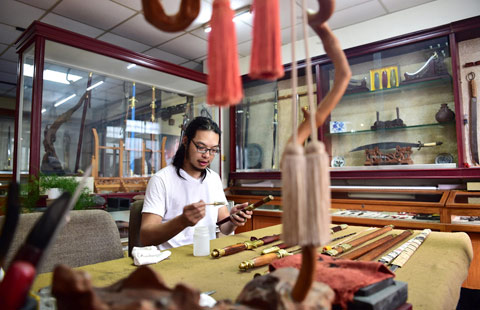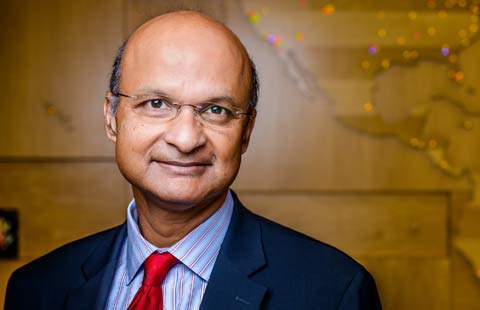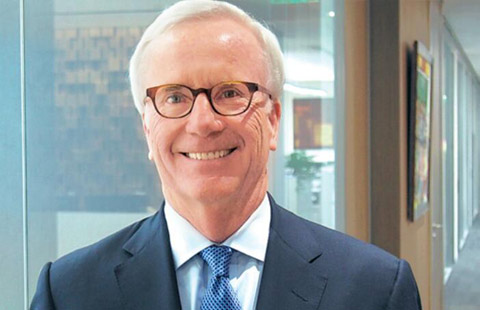ZTE banks on growth in Indian telecom market
|
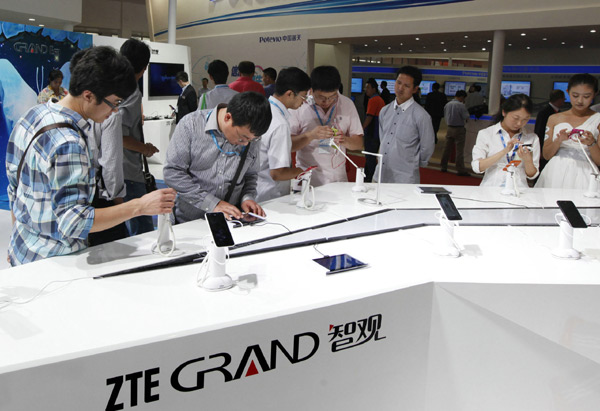 |
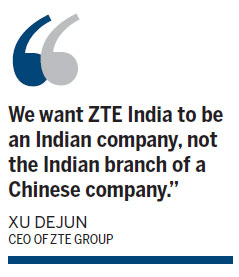
Dapper and bespectacled, Xu Dejun says he is stressed after taking the helm as chief executive officer of the Indian arm of ZTE Group, one of China's biggest makers of telecommunications equipment.
"As a new CEO, people will notice if you don't do well in six months, start asking questions after nine months and throw you out after a year," he told China Daily in New Delhi, before rushing to the airport to meet an important client in Mumbai.
Xu was promoted in February to oversee ZTE's entire business in India after working for more than nine years in the country.
His job won't be easy because the growth of India's telecommunications market has slowed down since what analysts described as an "explosion" in 2009, when the number of users grew by around 50 percent to 550 million.
But regulatory uncertainties combined with a series of scandals, including one over the allocation of telecom bandwidth, has dampened growth. In July 2012, for example, India lost 20.5 million mobile phone users, the first time India experienced a decline in mobile phone users. Indian users now spend the least in the world on cellphones, averaging just $2 to $4 a month. That compares with more than $50 in the United States.
ZTE, which has 23 offices throughout India, is one of the telecommunications companies that have ridden through the difficult patch and emerged in better shape. In 2012, ZTE India posted a small rate of growth, realizing revenues of $700 million, around half the $1.5 billion it received in 2009. But Xu said he is reevaluating India's telecom market and has decided to shift focus from telecom equipment to smartphones, which now account for around 10 percent of ZTE's sales in India. Xu wants to raise that to 30 percent within a few years. In three years, he added, ZTE will be among the top three smartphone makers in India.
To achieve the goal, ZTE unveiled five new smartphone models on Saturday and announced a partnership with local company Calyx Telecommunications to distribute smartphones in India.
Under the partnership, Calyx will be responsible for distributing and marketing ZTE smartphones in the country. Calyx's executive director Gaurav Somani said the initial focus will be on five states but smartphones made by ZTE will be available across India by October.
The move came after Huawei Technologies Co Ltd, another major Chinese telecommunications equipment maker, launched two new smartphone models in India last month.
Local media reported that ZTE and Huawei accounted for around 30 percent of India's smartphone market in the first quarter of 2013, up from 13.2 percent a year ago.
Another way for ZTE to revitalize growth, Xu added, is to further localize.
"We want ZTE India to be an Indian company, not the Indian branch of a Chinese company," Xu said.
Up to 85 percent of ZTE's 1,500 staff in India are hired locally and a third of the management positions are filled by Indians. ZTE plans to further raise its level of localization and promote more locals to management positions.






